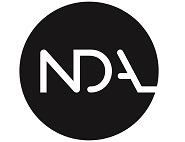A case study undertaken by the UK Nuclear Decommissioning Authority (NDA) has found that unmanned aerial vehicles (UAVs) or drones can potentially save time and costs apart from reducing risks to workers. Following the completion of the study, the organisation said that it is now exploring ways to maximise value of drones for nuclear decommissioning.
The non-departmental public body said that drones can be developed in different sizes and weights, from delicate birdlike machines to heavy-duty models that have weights of over 150kg.
Drones, which usually carry cameras, can deploy a huge range of various equipment that enables them to analyse and interact with the surroundings around them, said the Nuclear Decommissioning Authority. The unmanned aerial vehicles also have varied flight mechanisms, power systems, and navigational controls.
The organisation said that fixed-wing or rotary blades, and also self-navigating and pilot-controlled drones are used widely. Developers have also come up with new and enhanced power sources to enable the drones to fly longer and also carry heavier cargoes, said the organisation.
Furthermore, shape-changing drones are being developed so that the vehicles can fly in congested areas.
The Nuclear Decommissioning Authority stated: “Future research will push the boundaries still further, driving down costs and extending the length and complexity of the flights they can undertake. For nuclear decommissioning, such versatility offers enormous potential to save time and costs associated with inspecting the facilities across NDA sites.”
The organisation expects drones to reduce risks for employees who are engaged in activities that include working inside highly radioactive buildings or at height.
It also said that across the group a range of different drones were flown to perform different tasks, which includes inspection of tall chimneys, pipelines, roofs, and radioactive facilities.
The drones deployed by the organisation are said to have taken high-quality visual images, measured the temperature of vessels, detected areas of radioactivity, and mapped legacy facilities accurately.
The Nuclear Decommissioning Authority revealed that information gathered by the drones had removed the necessity of working at heights and radiation dose to operators. The organisation concluded that this approach has delivered savings in time and also money, compared to traditional manual methods.
Source: Government Computing

